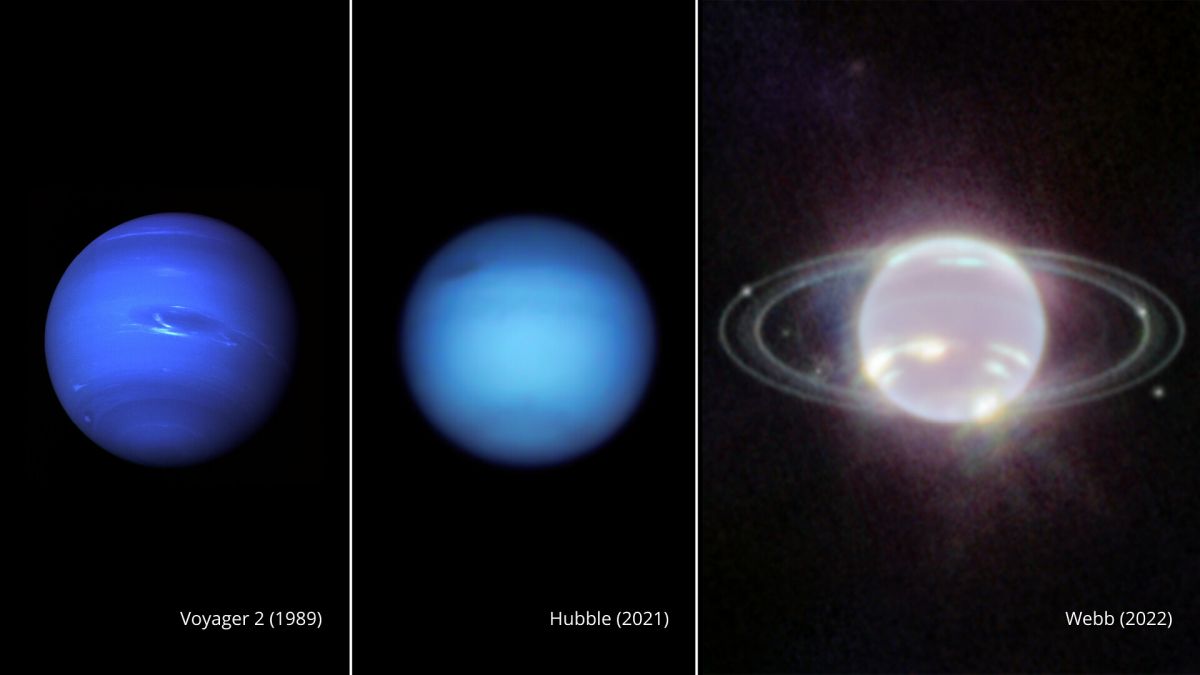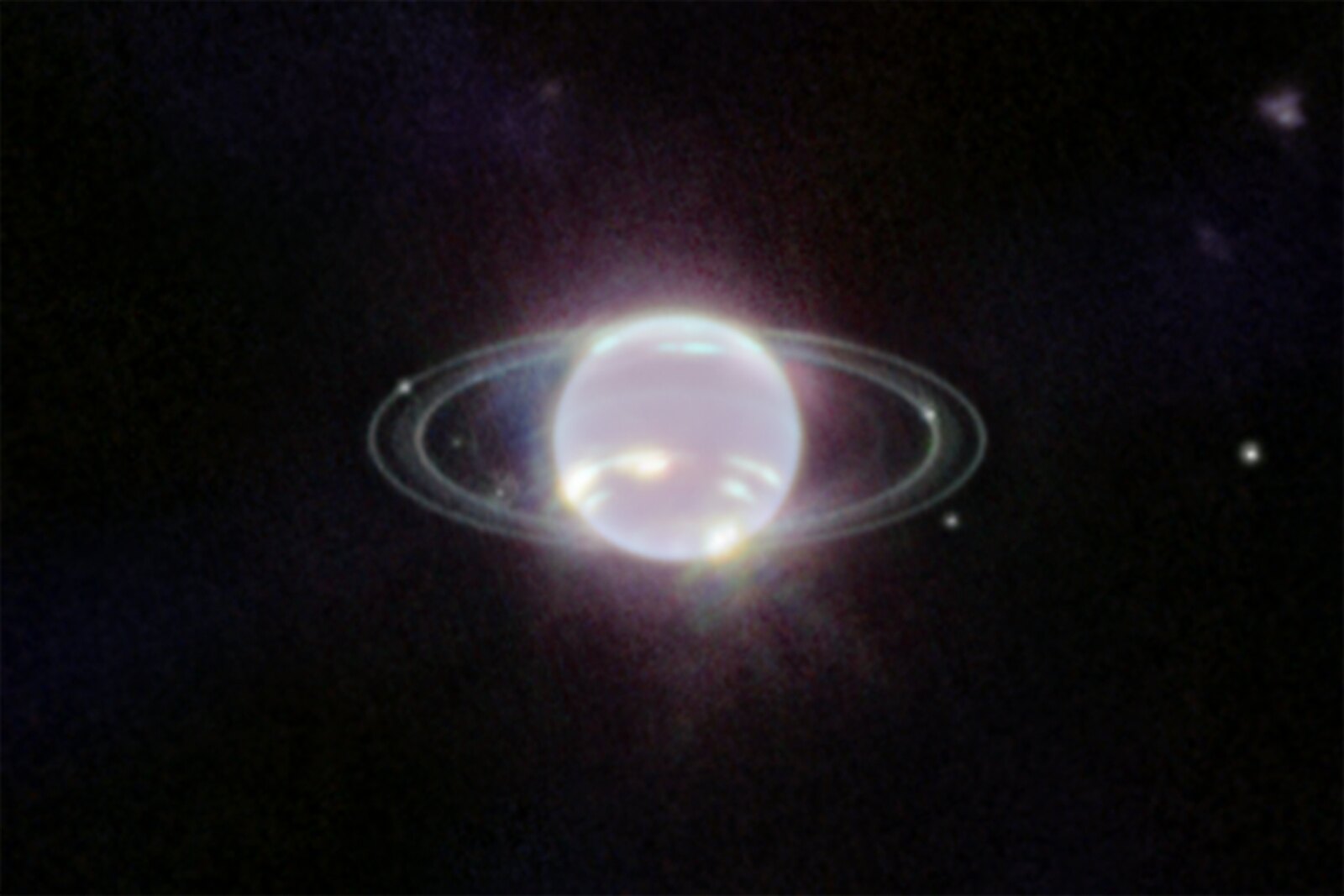
Saturn’s rings are well-known, but the farthest planet in the solar system, Neptune, also has rings. The James Webb Telescope, launched on Christmas Day 2021, has captured the clearest images of Neptune’s rings in 30 years.
Neptune is more than 4 billion kilometers from Earth and has not been visited by any probe since Voyager 2 took its stunning images in 1989.

Neptune as seen by Voyager 2 (1989), Hubble (2021) and Webb (2022)
In July, the James Webb Telescope was pointed at Neptune and took a series of infrared images of the planet, its rings, and some of its natural moons.
In the images obtained by the new telescope, Neptune looks like a pearl, surrounded by rings and bright spots that may be clouds of frozen methane.

Click here to enlarge the photo
Little is known about Neptune’s rings and their composition, and James Webb will tell us more.
The photos also show seven of Meptune’s 14 natural moons, the most famous of which is Triton, which looks very bright like a star because of its frozen nitrogen surface.
Neptune is also the windiest planet in the Solar System and the only one not visible to the naked eye. Huge storms the size of Earth occur here, and the temperature drops below -200 degrees Celsius in the clouds of frozen methane crystals.
Neptune is more than 4 billion kilometers from Earth, the average surface temperature is -214 degrees Celsius, and the mass of the planet is 17 times that of Earth.
Neptune was discovered in 1846 by mathematical calculations rather than direct observation. Astronomers realized that the orbit of Uranus was influenced by a large body, and this body turned out to be Neptune, although it is more than a billion kilometers away from Uranus.
A “Neptunian” day is 16 Earth hours long, and a year is 165 Earth years long, meaning that since its discovery 174 years ago, Neptune has circled the Sun only once. The light of the Sun on Earth is 900 times stronger than on Neptune.
From what is known at the moment, the planet has 14 natural satellites, and the last open Hippocampus was observed in 2013 with the help of Hubble. The largest is Triton, discovered in 1846, 17 days after the discovery of the planet.
Neptune has no solid surface, and although the clouds surrounding it are extremely cold (below -210 degrees), the rocky and iron core has the same temperature as the surface of the Sun. This internal heat causes strong winds and hurricanes, and the planet has some of the strangest weather in the entire solar system, with wind speeds exceeding 2,000 km/h.
Source: Hot News RO
Robert is an experienced journalist who has been covering the automobile industry for over a decade. He has a deep understanding of the latest technologies and trends in the industry and is known for his thorough and in-depth reporting.